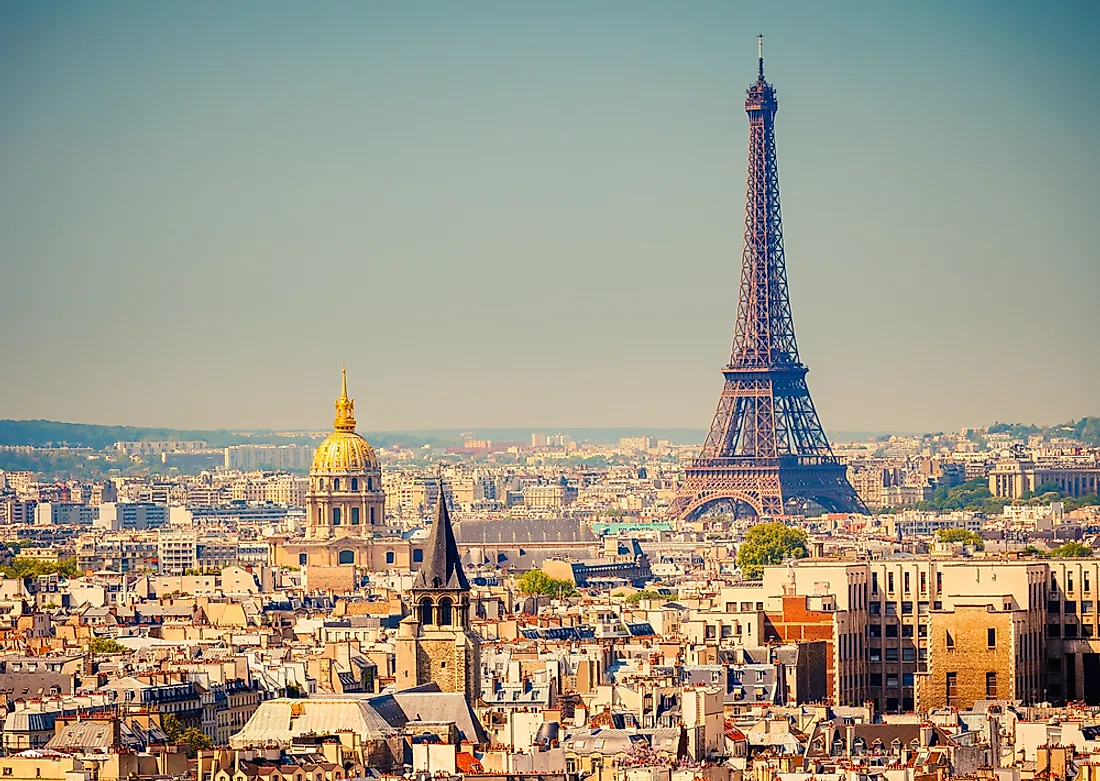What is the Capital of France?

Paris is the capital city of France. The city has an approximate area of 41 square miles with a population of 2,206,488 people as of 2018. Contrary to popular belief, the name of the city did not come from the Paris in Greek myths. Instead, the name Paris is derived from the city’s initial inhabitants who were part of the Celtic Parisii tribe. Sometimes, the city is called the City of Light for two reasons; it was among the first cities to adopt gas for lighting the streets and its role during the Age of Enlightenment.
Geography and Climate
Located in the north of Central France, the city is relatively flat with the highest point being 427 feet (which is Montmartre) above sea level while the lowest point is 115 feet above the sea level. In a sentence, the climate of Paris can be described as being between mild and moderately wet throughout the year. Typical summer temperatures range between 59°F and 77°F or sometimes higher in case things like solar flares occur. Winter is decidedly cold although the temperatures stay above freezing point at around 37°F. On rare occasions, light snow may be seen although it never settles on the ground. The highest documented temperature for Paris is 104.7°F (1947) while the lowest is 11.0°F (1879).
Economy
Services and commerce are the two main contributors to the prosperity of the city. The top 10 French Fortune Global 500 companies have their headquarters in or close to the city. With a GDP of approximately $850 billion, Paris is the country’s leader for economic activities. In 2011, the city emerged fourth in per-capita GDP rankings in Europe while it ranked second among Europe’s regions. Data from 2017 shows that the city is the seventh most expensive to live in globally and second in Europe with Zurich coming first.
Tourism
Tourism has always been a major source of income for Paris. However, after terrorists attacked the city in 2015 and 2016, the sector has been adversely affected with tourism dropping by 11.5% in 2016. Tourists are attracted to Paris because of the rich history the city has including its monuments and sights. In 2016, the most popular tourist destination was the Notre Dame Cathedral with 12 million visitors. The popular museum, The Louvre, came in second with around 7 million visitors. Others include the likes of the National Museum of Natural History, the Centre Pompidou, the Basilique du Sacré-Cœur, the Eiffel Tower, and many more.
Administration
As the capital city of France, the city plays host to the national government of France. Even the official residence of the president is in the city at the Élysée Palace while the Prime Minister is housed at the Hôtel Matignon. The Senate or the upper house meets at the Palais du Luxembourg while the Palais Bourbon is the meeting point for the Assemblée Nationale. The second highest public official after the President of France, the President of the Senate, stays at the Petit Luxembourg. International organizations who have headquarters in Paris include the likes of UNESCO, the International Chamber of Commerce, the International Federation for Human Rights, and a few others.











